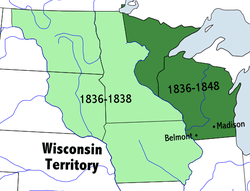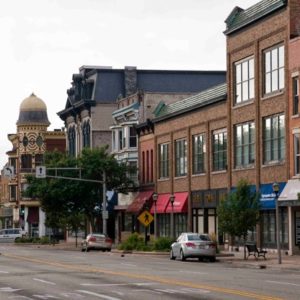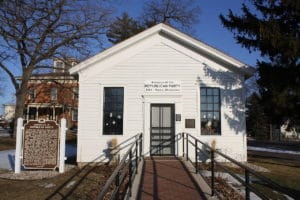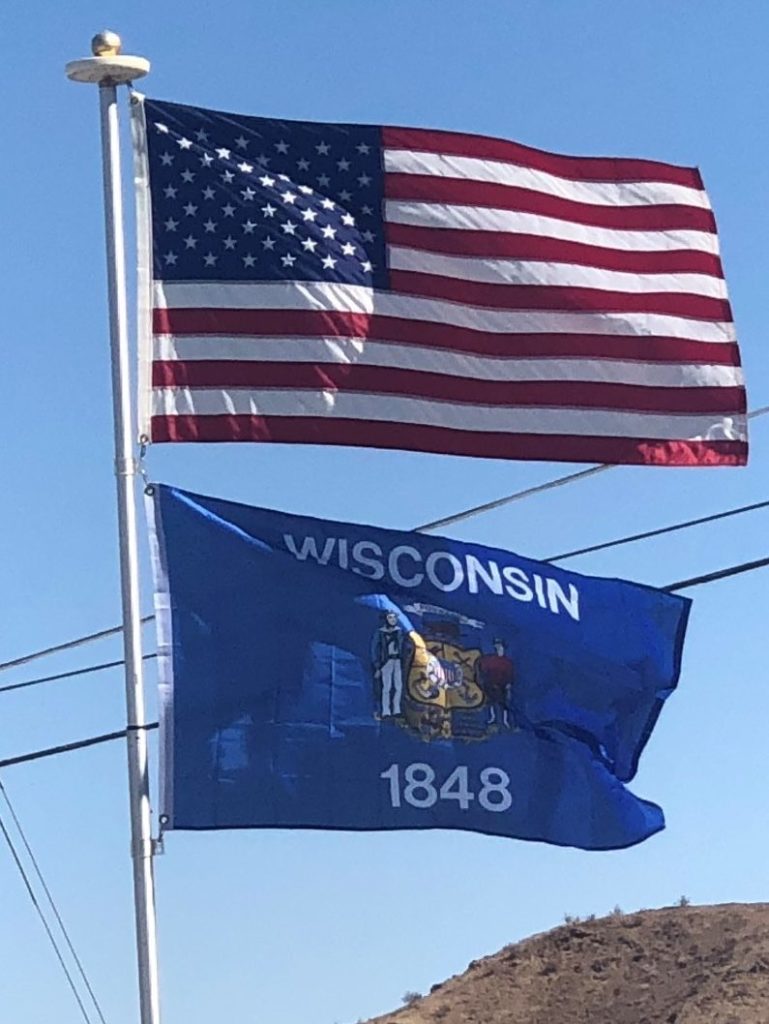
Following these conflicts, Wisconsin Territory was created by an act of the United States Congress on April 20, 1836.
Statehood:
The Erie Canal facilitated the travel of both Yankee settlers and European immigrants to Wisconsin Territory. Yankees from New England and upstate New York seized a dominant position in law and politics, enacting policies that marginalized the region’s earlier Native American and French-Canadian residents. Yankees also speculated in real estate, platted towns such as Racine, Beloit, Burlington, and Janesville, and established schools, civic institutions, and Congregationalist churches.

At the same time, many Germans, Irish, Norwegians, and other immigrants also settled in towns and farms across the territory, establishing Catholic and Lutheran institutions.
The growing population allowed Wisconsin to gain statehood on May 29, 1848, as the 30th state. Between 1840 and 1850, Wisconsin’s non-Indian population had swollen from 31,000 to 305,000. Over a third of residents (110,500) were foreign born, including 38,000 Germans, 28,000 British immigrants from England, Scotland, and Wales, and 21,000 Irish. Another third (103,000) were Yankees from New England and western New York state. Only about 63,000 residents in 1850 had been born in Wisconsin.
Civil War:
Politics in early Wisconsin were defined by the greater national debate over slavery. A free state from its foundation, Wisconsin became a center of northern abolitionism. The debate became especially intense in 1854 after Joshua Glover, a runaway slave from Missouri, was captured in Racine. Glover was taken into custody under the Federal Fugitive Slave Law, but a mob of abolitionists stormed the prison where Glover was held and helped him escape to Canada. In a trial stemming from the incident, the Wisconsin Supreme Court ultimately declared the Fugitive Slave Law unconstitutional. The Republican Party, founded on March 20, 1854, by anti-slavery expansion activists in Ripon, Wisconsin, grew to dominate state politics in the aftermath of these events.

During the Civil War, around 91,000 troops from Wisconsin fought for the Union.
Economic Progress:
Wisconsin’s economy also diversified during the early years of statehood. While lead mining diminished, agriculture became a principal occupation in the southern half of the state. Railroads were built across the state to help transport grains to market. Wisconsin briefly became one of the nation’s leading producers of wheat during the 1860s. Meanwhile, the lumber industry dominated in the heavily forested northern sections of Wisconsin, and sawmills sprang up in cities like La Crosse, Eau Claire, and Wausau. These economic activities had dire environmental consequences. By the close of the 19th century, intensive agriculture had devastated soil fertility, and lumbering had deforested most of the state. These conditions forced both wheat agriculture and the lumber industry into a precipitous decline.
Beginning in the 1890s, farmers in Wisconsin shifted from wheat to dairy production in order to make more sustainable and profitable use of their land. Many immigrants carried cheese-making traditions that, combined with the state’s suitable geography and dairy research led by Stephen Babcock at the University of Wisconsin, helped the state build a reputation as “America’s Dairyland”.
